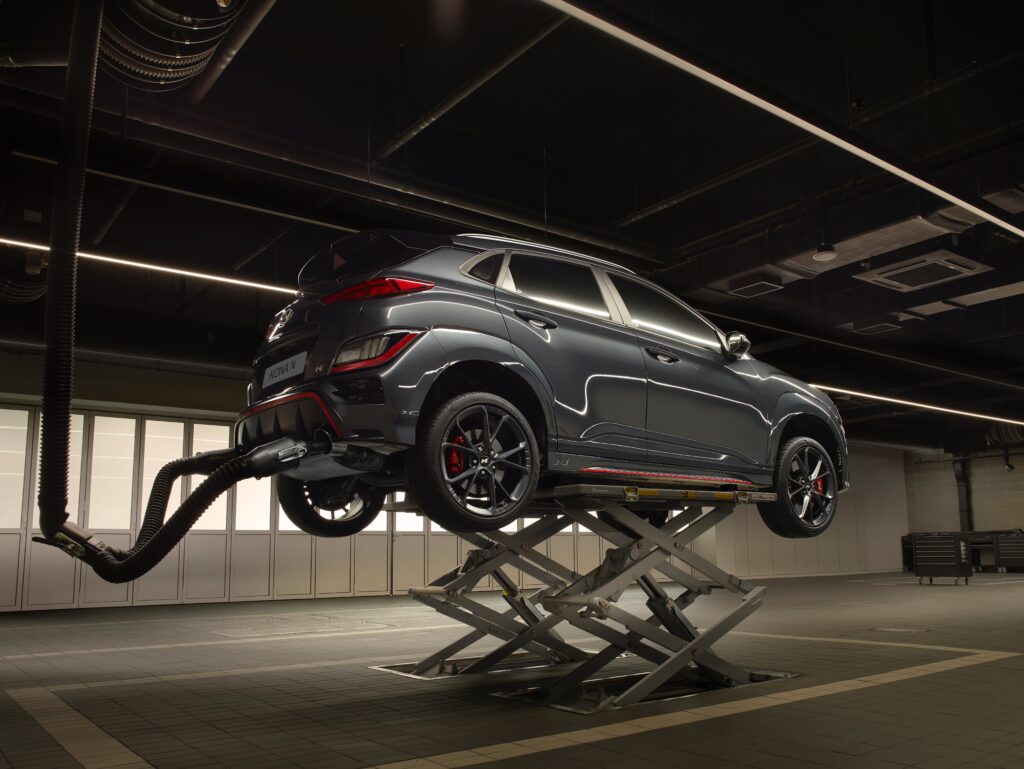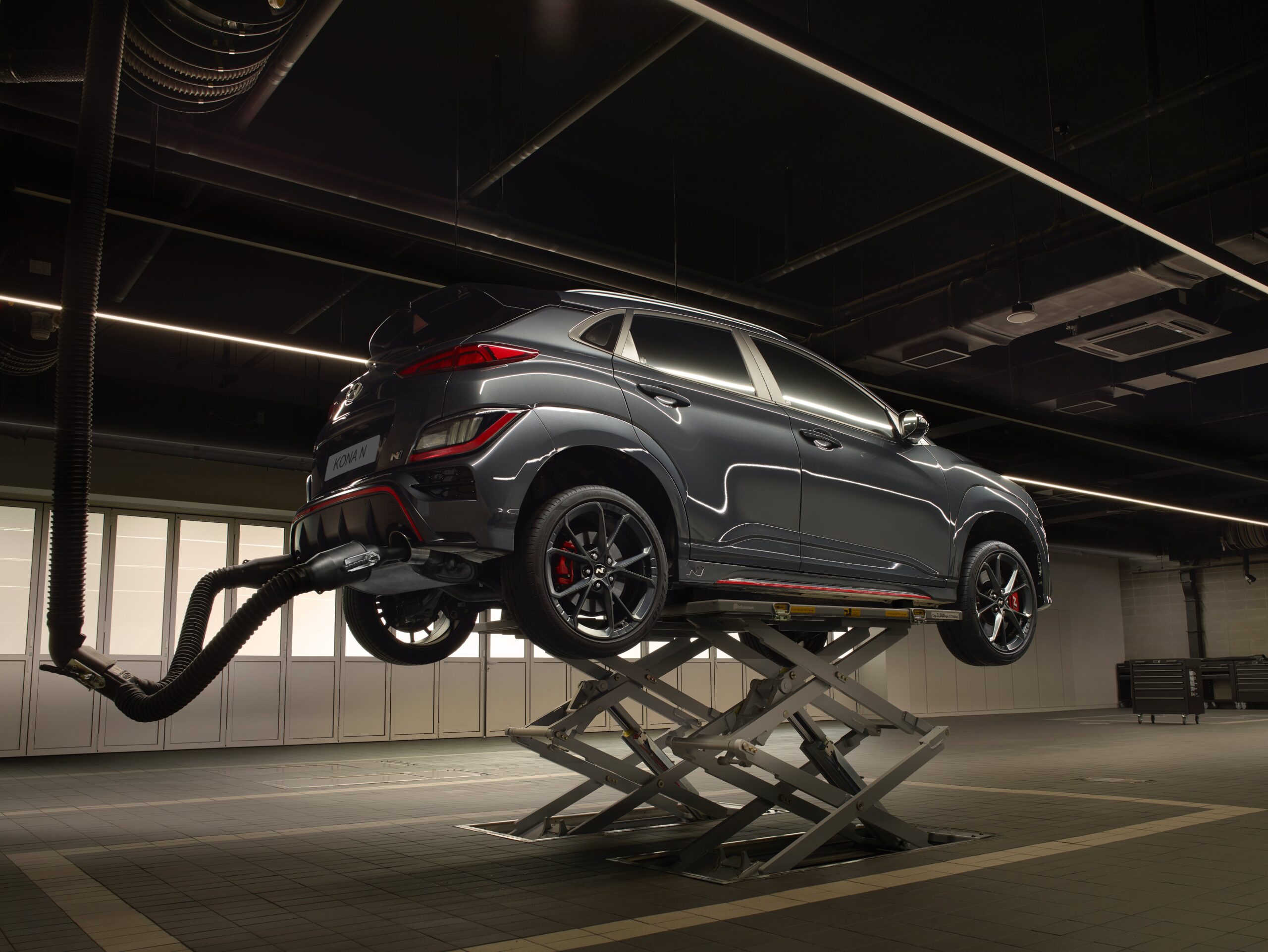In this article, we’ll explore the impact of wheel alignment issues on handling when navigating curves. Driving smoothly around a curve requires precise control and stability, and any misalignment in your wheels can significantly affect your cars’ performance. From compromised traction to uneven tire wear, we’ll uncover the potential consequences of neglecting regular wheel alignments and how you can ensure a safer and more enjoyable driving experience on those winding roads.

Importance of Wheel Alignment
Proper wheel alignment is crucial for maintaining the overall performance and safety of your vehicle. It refers to the process of adjusting the angles of the wheels to ensure that they are parallel to each other and perpendicular to the ground. When your wheels are aligned correctly, it allows for optimal contact between the tires and the road, resulting in improved handling, better fuel efficiency, and increased tire longevity. Neglecting wheel alignment can lead to a range of problems, especially when it comes to handling on curves.
Definition of Wheel Alignment
Wheel alignment, also known as tire alignment, is a procedure that ensures the angles of the wheels are set according to the manufacturer’s specifications. The three main aspects of wheel alignment are camber, toe, and caster. Camber refers to the vertical tilt of the wheels, toe refers to the inward or outward angle of the wheels, and caster refers to the angle of the steering axis. These angles need to be adjusted accurately to optimize the performance and safety of your vehicle.
Significance of Proper Wheel Alignment
Proper wheel alignment plays a critical role in handling on curves. When your wheels are correctly aligned, it allows for balanced weight distribution, which enhances the vehicle’s cornering ability. It also ensures that the tires maintain optimal contact with the road, providing maximum grip and stability during turns. Without proper alignment, your vehicle may experience handling issues that can compromise your safety and the performance of your vehicle.
Factors Affecting Wheel Alignment
Several factors can contribute to wheel misalignment, which in turn affects handling on curves. It is important to understand these factors to take appropriate measures to maintain proper alignment.
Wear and Tear
Over time, various components of your vehicle’s suspension system, such as ball joints, bushings, and control arms, can experience wear and tear. This wear can result in misalignment if not addressed promptly. Regular maintenance and inspections can help identify and address any issues before they lead to significant alignment problems.
Road Conditions
The condition of the roads you drive on can also impact wheel alignment. Potholes, speed bumps, and rough surfaces can cause your wheels to become misaligned. It is important to exercise caution and drive defensively on roads with poor conditions to minimize the risk of misalignment.
Suspension Issues
Any issues with your vehicle’s suspension system can affect wheel alignment. Issues such as sagging springs, worn-out shocks, or damaged struts can cause the wheels to become misaligned. Regular suspension inspections and timely repairs can help prevent alignment problems.

Effects of Wheel Misalignment on Handling
When your wheels are misaligned, it can have noticeable effects on the handling of your vehicle, especially on curves.
Uneven Tire Wear
One of the most common effects of wheel misalignment is uneven tire wear. Improper alignment can cause certain parts of the tires to wear out more quickly than others. This can lead to a decrease in traction and grip, which can be particularly dangerous when navigating curves.
Pulling or Drifting
If you notice that your vehicle tends to pull or drift to one side while driving, it could be a sign of misalignment. This can make it challenging to maintain control when taking corners, as the vehicle may veer off in an unintended direction.
Reduced Handling Stability
Misaligned wheels can significantly impact the stability of your vehicle’s handling. You may experience increased body roll and a decrease in responsiveness during cornering. This can make it more difficult to navigate curves smoothly and safely.
Impact on Vehicle Dynamics
Wheel misalignment can also affect the overall dynamics of your vehicle, particularly on curves.
Understeer
Understeer occurs when the front wheels of a vehicle lose traction during a turn, causing the vehicle to continue in a straight line instead of following the desired path. Wheel misalignment can exacerbate understeer, making it even more challenging to maneuver around curves.
Oversteer
Oversteer is the opposite of understeer and occurs when the rear wheels of a vehicle lose traction during a turn, causing the rear end to slide out. Misaligned wheels can increase the likelihood of oversteer, making it essential to have proper alignment for safe cornering.
Increased Body Roll
Body roll refers to the sideways tilting of a vehicle’s body during cornering. When your wheels are misaligned, it can result in increased body roll, reducing stability and control while navigating curves. Proper alignment helps distribute the weight evenly, minimizing body roll and ensuring safer handling.

Handling Challenges on Curves
Wheel misalignment can present several challenges when it comes to handling on curves.
Decreased Grip
When your wheels are misaligned, it reduces the amount of tire surface in contact with the road. This decreases the grip and traction, making it harder to maintain control during turns. Proper alignment ensures that the tires have maximum contact with the road surface, enhancing grip and reducing the risk of skidding or sliding.
Unpredictable Steering Response
Misaligned wheels can lead to unpredictable steering responses, particularly when navigating curves. Your vehicle may feel unresponsive or may overreact to steering inputs, making it difficult to maintain a smooth and controlled path through the curve. Proper alignment promotes consistent and predictable steering responses, improving overall handling.
Increased Risk of Skidding
When your vehicle’s wheels are misaligned, it can increase the risk of skidding, especially on curves. Skidding occurs when the tires lose traction with the road surface, leading to a loss of control. Proper alignment minimizes the chances of skidding, providing better handling and reducing the likelihood of accidents.
Alignment Issues and Cornering Techniques
While wheel misalignment can present challenges during cornering, there are techniques and considerations that can help compensate for alignment issues.
Compensation Techniques
Proper driving techniques can help compensate for minor alignment issues. For example, when entering a curve, you can apply gentle and progressive steering inputs to maintain control and balance. It is important to be mindful of your vehicle’s handling characteristics and adjust your driving accordingly.
Compromised Cornering Performance
However, it is essential to remember that compensation techniques can only do so much. Wheel misalignment can still significantly impact your vehicle’s cornering performance. It is crucial to have your wheels properly aligned to ensure optimal handling and maximize safety.
Safety Considerations
Driving with misaligned wheels can compromise your safety and the safety of others on the road, especially when navigating curves. It is crucial to prioritize regular wheel alignment checks and address any alignment issues promptly. This will not only improve your handling on curves but also enhance overall safety and performance.

Tire Contact Patch and Alignment
Proper tire contact with the road surface is essential for optimal handling on curves. Alignment plays a vital role in ensuring the correct contact patch between the tires and the road.
Importance of Proper Tire Contact
The tire contact patch refers to the area of the tire that is in contact with the road surface at any given moment. It is crucial to have an adequate and consistent contact patch to ensure maximum grip and control, particularly during cornering. Proper alignment helps maintain the desired contact patch, enhancing handling and reducing the risk of skidding or sliding.
Alignment Impact on Contact Patch
When your wheels are misaligned, it can disrupt the desired contact patch. Uneven tire wear caused by misalignment can result in an uneven contact patch, reducing grip and compromising handling performance. Proper alignment ensures that the contact patch is uniform across all four tires, optimizing traction during curves.
Optimal Alignment for Cornering
To achieve optimal handling on curves, it is essential to have the correct alignment settings. A slight negative camber setting, where the top of the tires is slightly tilted inward, can improve cornering performance by increasing the tire’s contact with the road surface. However, it is important to note that the specific alignment requirements may vary depending on the vehicle and driving conditions. Consulting with a professional alignment technician can help determine the optimal settings for your vehicle.
Alignment Adjustments for Curves
To improve handling on curves, specific alignment adjustments can be made to optimize performance.
Camber Adjustment
Camber adjustment involves altering the vertical tilt of the wheels. A slight negative camber setting, where the top of the tires tilts slightly inward, can enhance cornering performance by maximizing the contact patch. However, it is important to strike a balance, as excessive negative camber can result in uneven tire wear and compromised handling on straight roads.
Toe Adjustment
Toe adjustment refers to the inward or outward angle of the wheels when viewed from above. Proper toe alignment can enhance stability and cornering ability. Toe-in, where the front edges of the tires are slightly closer than the rear edges, can promote stability during cornering. However, excessive toe-in can lead to increased tire wear and decreased straight-line stability.
Caster Adjustment
Caster adjustment involves the angle between the steering axis and vertical line when viewed from the side. The correct caster angle helps improve steering stability and cornering ability. A positive caster angle can enhance straight-line stability, but too much positive caster can make steering inputs more challenging, especially on curves.

Alignment Maintenance for Cornering
Regular maintenance is vital to ensure proper alignment and optimal handling on curves.
Regular Wheel Alignment Checks
Routine wheel alignment checks are crucial to identify any misalignment issues before they worsen. It is recommended to have your alignment checked at least once a year, or more frequently if you notice any handling problems, uneven tire wear, or after significant suspension repairs or modifications.
Suspension Inspections
Along with wheel alignment checks, regular inspections of your vehicle’s suspension system are necessary. This includes checking for worn-out components, damaged bushings, and other issues that can affect alignment. Addressing suspension problems promptly helps prevent alignment issues and ensures safe and smooth handling on curves.
Tire Rotations
Regular tire rotations can also help maintain proper wheel alignment. Rotating the tires at recommended intervals ensures even wear and prolongs tire life. This promotes consistent handling on all corners of your vehicle, allowing for better control on curves.
Professional Alignment Services
While some alignment adjustments can be done by DIY enthusiasts, seeking professional alignment services offers numerous benefits.
Benefits of Professional Wheel Alignment
Professional alignment services provide expertise and precision in aligning your wheels according to manufacturer specifications. Trained technicians use advanced equipment and techniques to ensure accurate and consistent alignment, maximizing the performance and safety of your vehicle.
Diagnostic Tools and Technology
Professional alignment services utilize advanced diagnostic tools and technology to assess the current alignment status of your vehicle. These tools can measure various alignment angles and identify any misalignment issues accurately. With this information, technicians can make precise adjustments specific to your vehicle’s needs.
Alignment Recommendations
Professional alignment technicians can provide valuable recommendations based on your driving habits, vehicle usage, and specific alignment requirements. They can suggest alignment settings that optimize handling on curves while considering factors such as tire wear, vehicle dynamics, and efficiency. Following their recommendations can greatly enhance your driving experience and safety.
In conclusion, wheel alignment is a critical aspect of maintaining proper handling on curves. Misaligned wheels can lead to various handling challenges and compromise the overall performance and safety of your vehicle. By understanding the factors affecting wheel alignment, the impact of misalignment on handling, and the importance of proper alignment for cornering, you can take proactive measures to maintain optimal alignment. Regular alignment checks, suspension inspections, and professional alignment services are essential components of alignment maintenance for safe and enjoyable driving on curves. Remember, investing in proper wheel alignment ultimately ensures a smoother, safer, and more enjoyable driving experience.

